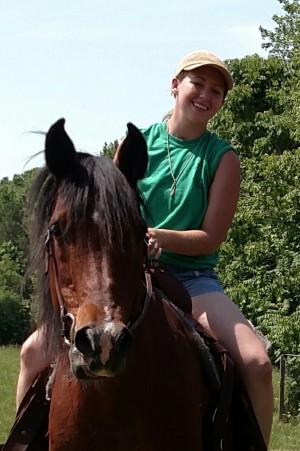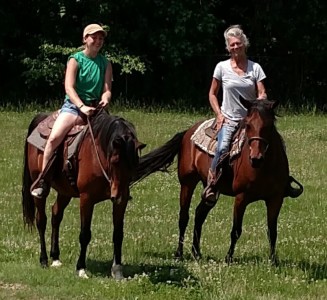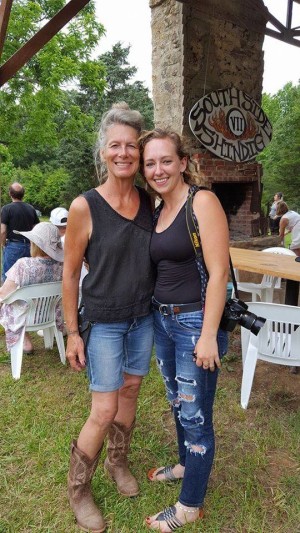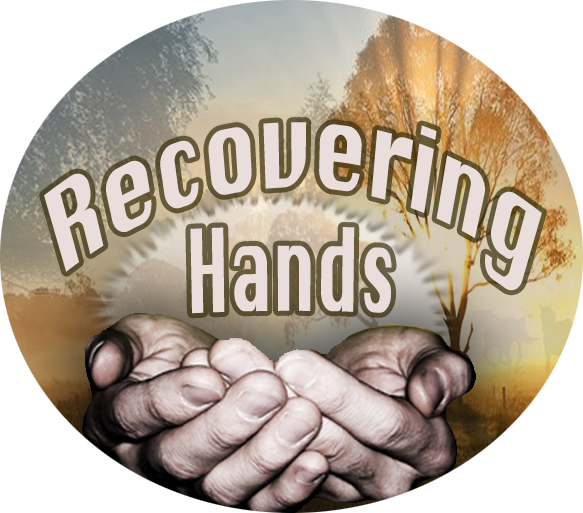Recovering Hands Reclaiming our planet one life at a time
Recovering Hands In The News
With potent impacts in rural areas road to opioid addiction recovery is often paved with many difficult twists and turns
By Caleb Ayers cayers@registerbee.com
 All Linsay Clark could think about was her house, her advertising job and her two sons as the drugs wore off and her mom and sisters confronted her. She couldn’t go more than a few hours without getting high.
All Linsay Clark could think about was her house, her advertising job and her two sons as the drugs wore off and her mom and sisters confronted her. She couldn’t go more than a few hours without getting high.
Clark knew there was a strong possibility she could lose it all if she admitted her own addiction and took the necessary time and effort to get clean, so she felt her fight or flight reflexes kicking in.
“My body was telling me to run, but that kind of consciousness in my mind was saying ‘Linsay, you have to hear what they have to say,’” she recalled.
So she called her therapist, who told her exactly what to do: get in the car, go to the emergency room in Morgantown, West Virginia, and tell them that she was an addict and a danger to herself and others.
The next day, Clark got in the car and did exactly that, beginning her difficult journey into recovery. While experts say addicts often relapse or fail to get clean altogether, Clark worked with other recovering addicts to arrive to where she is today — clean for 29 months on Monday.
The opioid crisis is both a term used to describe an increase in prescription and non-prescription use and to describe the abuse of opiate and opioid drugs, which have flooded communities nationwide over the last several decades. The epidemic has not discriminated against the young or the old, the rich or the poor, the educated or the uneducated, said Dr. Scott Spillmann, who works with the Virginia Department of Health as the district health director for the Pittsylvania/Danville and Southside Health Districts.
“Look in the mirror because it can be anybody,” he said when asked to describe the typical opioid addict. “Anybody could become an addict.”
Dr. Paul Earley, an addiction medicine physician based in Georgia, has spent much of his career helping physicians recover from addictions. The percentage of physicians who struggle with opioid and alcohol addictions is comparable to the everyday population, he said.
Addiction, he said, “is an equal opportunity destroyer.”
While opioids affect people from all walks of life, the effects of the epidemic have been especially potent in rural areas, Spillmann said.
The catchall term opioid refers to natural opiates, such as morphine, codeine and heroine, as well as synthetic substances like methadone and fentanyl. Generally, the synthetic opioids are significantly more powerful, and therefore dangerous.
Spillmann said the human brain has opiate receptors that function like locks that are unlocked only by specific opioids.
“The intent of the opioids is to reduce the brain’s ability to feel pain,” he said.
Consistent abuse of opioids can make a person more sensitive to pain and usually increases a person’s tolerance, which means greater quantities of stronger drugs are needed to produce the desired effect. This higher tolerance is what results in overdoses. Since 2013, drug overdoses have sat atop the list of unnatural causes of death in Virginia, climbing to more than one and a half times as many deaths as gun-related and motor vehicle-related fatalities, Virginia Department of Health data show.
Many of these overdoses have been from opioids or deadly combinations of opioids and other such drugs as benzodiazepines like Valium and Xanax, which are central nervous system depressants. The damage also extends past the overdose deaths, which actually decreased last year, according to data from the Center for Disease Control and Prevention. This decrease is due to such overdose-reversing drugs as Narcan.
Andrew Miller, senior litigation counsel for the New York, New York-based Sanford Heisler Sharp, LLP, said that directly and indirectly, opioids have increased crime rates and incurred extra costs on community law enforcement, social services and emergency response.
States and communities around the country have filed lawsuits against pharmaceutical providers and distributors alike to recoup some of the costs. Miller, who has filed opioid-related cases on behalf of many Virginia localities, including Pittsylvania County, said these cases all revolve around two primary goals: stopping the flow of drugs to save lives and compensating localities for the costs accrued as a result of the influx of opioids.
But localities aren’t just concerned with recovering expenses; they want help solving this problem, which is a legal term called abatement, Miller said.
“What’s it going to cost going forward to fix this problem that exists, and that cost is enormous, frankly,” Miller said. “It’s going to be a huge expense for counties and cities if they want to do it properly and if they want to get back to square one.”
 By the time Clark was 16 years old, she had already struggled with addiction to alcohol and drugs for several years. And then her orthodontist first prescribed her Lorcet, an opiate painkiller for when she had her wisdom teeth removed.
By the time Clark was 16 years old, she had already struggled with addiction to alcohol and drugs for several years. And then her orthodontist first prescribed her Lorcet, an opiate painkiller for when she had her wisdom teeth removed.
Like many other opioid addicts, that first exposure to a prescription drug led her to try more opioids, her dependence and tolerance gradually increasing until her body physically required them.
Often, she would combine opioids with benzodiazepines, a very dangerous and potentially lethal combination, and her life began to revolve around her ability to get opiates.
“I had big goals for myself,” she said. “Once the drugs took hold, all I could do was survive.”
In her years of opioid abuse, Clark crashed vehicles, lost jobs, blew through all the money she had earned and lost interest in her goals and relationships. Anything or anyone that came between her and her drugs was a threat.
“When you start doing opiates, you really stop doing everything else,” she said. “Everything else kind of gets put on hold. There’s no more growth in any area of your life.”
She did manage to earn a degree in liberal arts from West Virginia University through a nontraditional online program.
Despite the family intervention and the rehab programs that followed, Clark, like most addicts, could not immediately get clean.
“It’s not uncommon for people to try three, four or five times,” Spillmann explained.
Earley said that a patient’s commitment to recovery will vary over time. After the first phase — which he described as “rough” and “physical” — the mental aspect becomes increasingly important.
With potent impacts in rural areas, road to opioid addiction recovery often paved with many difficult twists and turns
“It’s not a linear path,” Earley said. Relapsing a few times should not be deemed a failure. “Their failure is not the relapse. Their failure is to stop trying,” Spillman said. “The ones who keep trying are the ones who succeed.”
While Clark was unable to immediately free herself from the drugs, she did continue to fight her addiction and attend 12-step programs, a form of rehabilitation based of the idea of members helping each other abstain from substance abuse, much like with Alcoholics Anonymous.
A problem Clark faced was her doctor’s insistence on giving her more drugs to wean her off opioids. Medication assisted treatment (MAT) usually involves drugs like suboxone, which block the opioid receptors in the brain, Spillmann explained.
Clark did whatever she could to get more suboxone: she would drive from doctor to doctor, pharmacy to pharmacy to get new prescriptions, paying cash when insurance ran out. It was cheaper than getting pain medication from the streets.
“The drugs that they were prescribing me to get off of drugs became my drugs of choice,” Clark said.
 Kim Adams, who runs a women’s recovery facility called Recovering Hands in Halifax County, says many addicts aren’t encouraged to move on from suboxone.
Kim Adams, who runs a women’s recovery facility called Recovering Hands in Halifax County, says many addicts aren’t encouraged to move on from suboxone.
“We’re seeing less and less in 12-step programs because they’re being maintained by doctors, unsuccessfully,” Adams said.
Clark went through two overlapping series of withdrawals. She equates withdrawal symptoms from opiates to having the flu: chills and body aches, sweats, severe physical and mental anxiety and an inability to sleep and keep food down. Those symptoms plagued her for months.
For the suboxone, the symptoms were much more severe: Clark had nine seizures in a four-year period. One caused a car wreck and another almost cost her an eye.
Friends from her recovery program encouraged her throughout, and some helped her get to Recovering Hands for a six-week stay.
Adams understands the havoc addiction can wreak on people’s lives: her mother couldn’t shake her dependence on pain medications; her brother abused as many as nine different pain medications and died of an overdose. Adams, now in recovery for 30 years herself, focuses on peer-recovery at her farm.
“There’s no such thing as a recovered addict… you need to continue to maintain your recovery,” she said.
Recovering addict Doug Oakley followed Adams to Halifax to help at Recovering Hands, where he does maintenance and fundraising.
“That’s how we continue our recovery, is by helping other people,” he said.
Also a long-term recovering addict, Adams’ husband, Bill Adams, works full-time and helps her run the farm.
“Giving people a chance to become a productive member of society is worth anyone’s time,” he said.
During her stay, Clark worked with horses and in the garden, meditated and did yoga daily, attended 12-step programs, and tested and developed responses to triggers that could send her back to the drugs.
“It’s kind of a magical thing that happens when you’re forced to face yourself,” Clark said. “There were really no distractions there.”
When Clark completed the program, because knew she couldn’t just go back to her life in Cumberland, she packed up her kids and moved back to Halifax to get involved with Recovering Hands.
After living and working as a teacher’s aide in Halifax for over two years, she moved to Maryland with her husband and two sons in July, and recently obtained a job working with the language arts and special education department in a middle school.
Even after being clean for over two and a half years, it’s still an everyday fight.
“Some days I’m struggling and I’m like, ‘Oh my God, I did nothing right today except stay clean,’” she said. “But as long as I stay clean, I have this chance to grow.”
With so many recovering addicts — her mother, Kim and Bill, her friends from the rehabilitation programs and her husband, who she met through her recovery — investing into her, Clark has turned around and tried to help others recover too. She serves on the board for Recovering Hands, and while she lived in Halifax, she would bring 12-step program meetings to people who were in the hospital for overdoses or addiction recovery.
Many addicts fail to move past their addictions, but Adams hopes to see more women walk out of her program like Clark, who has overcome her ever-present need for drugs and is now committed and present in her career and family.
“[Clark] became an asset to the community afterward,” Adams said.
Ayers reports for the Register & Bee. Reach him at (434) 791-7981.
https://www.godanriver.com/news/local/with-potent-impacts-in-rural-areas-road-to-opioid-addiction/article_a22aeb19-1051-51d5-b6b2-d7dee20bfb68.html
Recovering Hands is a 501-3c Non-Profit Organization and in order to help women like Linsay to rebuild their lost lives, we need your help. Please explore our site to learn more about us, shop our online store and/or make a donation..

